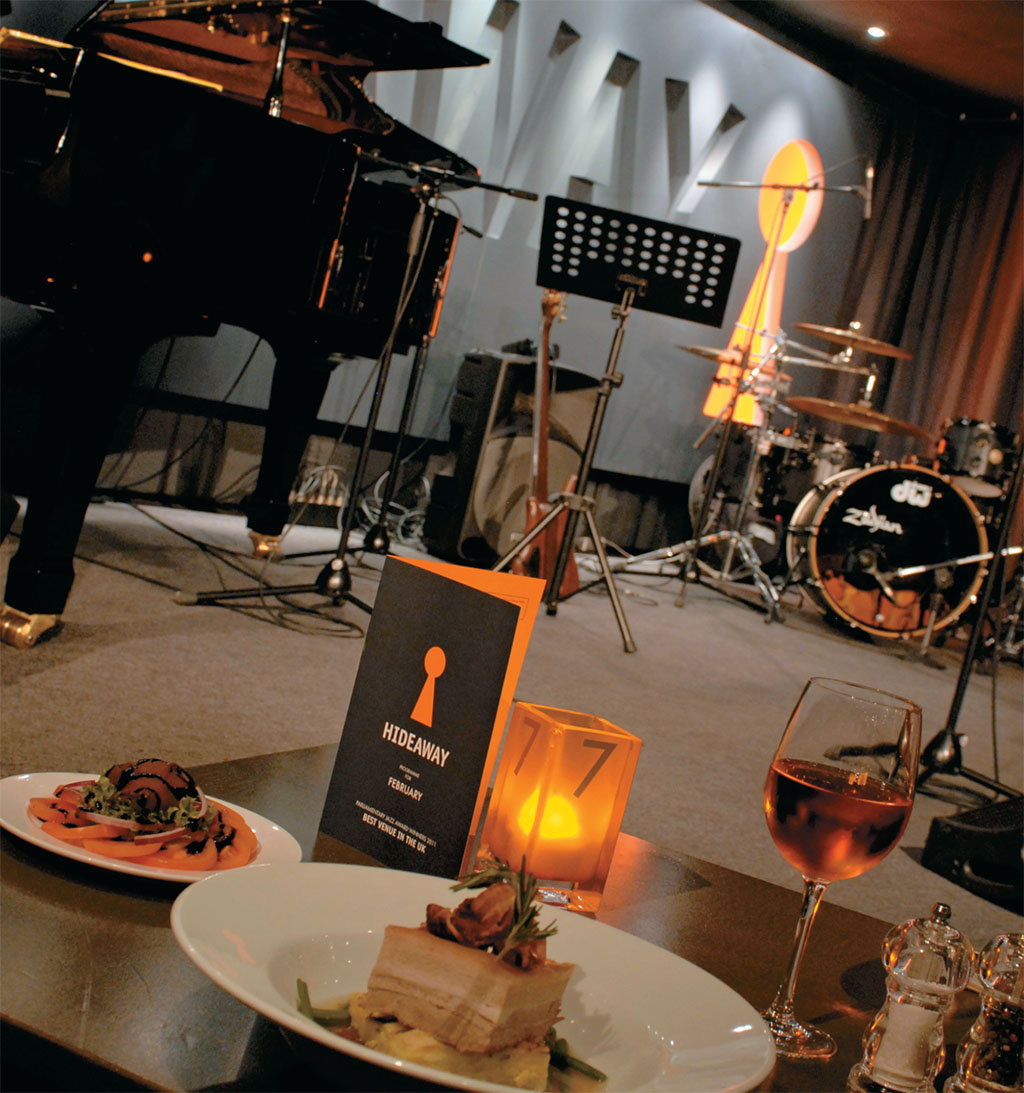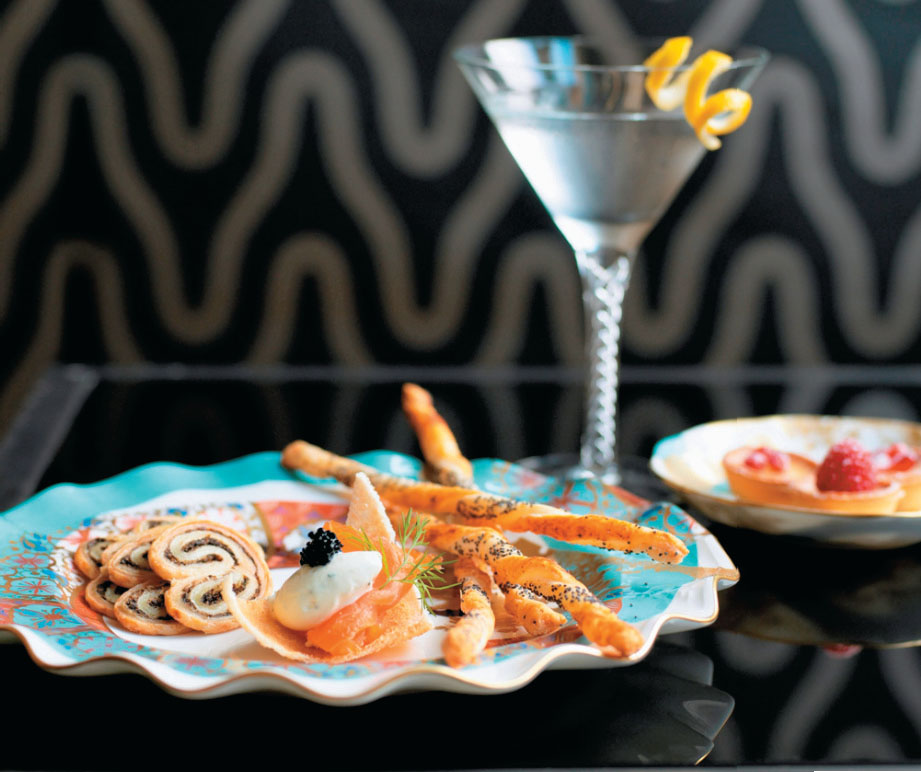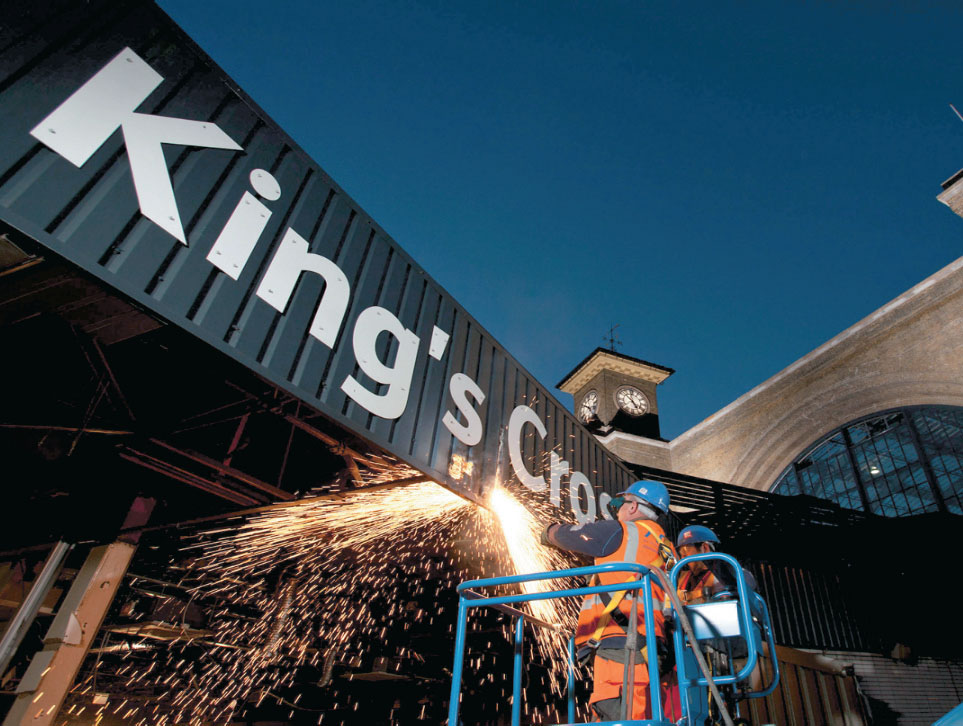

[caption id="ArtDecoandaHideaway_img2" align="aligncenter" width="921"]

COURTESY OF FLEMINGS;
[caption id="ArtDecoandaHideaway_img3" align="aligncenter" width="963"]

COURTESY OF NETWORK RAIL
Back in town, my sister wanted to meet up for afternoon tea at her favorite haunt, Flemings. She particularly likes it because it’s traditional in style and cozy in feel but with very modern décor. There are giant, squashy, high-backed armchairs that one might expect Alice to sit in Through the Looking Glass, if they weren’t electric blue and surrounded by geometric wallpaper, funky cut-glass mirrors and Murano glass chandeliers. Since neither of us was particularly hungry we just went for a pot of tea and a cake instead of the full afternoon parade. Many places that advertise set afternoon tea at ridiculous prices, even in Mayfair, will just serve tea and scones or a slice of cake if asked (though they don’t usually take advance bookings for that) and sometimes it’s a blessed relief not to have to wade through three tiers of sandwiches, plates full of cakelets and piles of scones because “I’ve paid 40 quid for the experience and I’ll eat it all if it’s the last thing I do.” Service was solicitous and, unlike some of Flemings’s more famous neighbours, they make no effort to chivvy you to finish up and leave so that they can squeeze in the next coachload of Chinese tourists. CANDLE AND LANTERN-LIT tours are big news in London at the moment; excuses for occasional evening and nighttime openings of places often closed after dark. Over the years I’ve visited everywhere from Hampton Court to Dennis Severs House, Sir John Soane’s Museum to Eastbury Manor by candlelight. I took my parents on a Twilight Tour of Eltham Palace, one of the oddest stately homes around. It’s a palace of two halves, being at once the childhood home of Henry VIII, with a gigantic medieval great hall, massive hammer beams, high arched windows and swan-filled moat and, more famously, what is probably the most elegant Art Deco mansion in Britain. After Henry VIII decamped to his other palaces, Eltham fell out of favor and gradually collapsed over the centuries, eventually suffering the indignity of being used to store farm animals and machinery during Victorian times. When Stephen and Virginia Courtauld (of the Courtauld textile fortune) were looking for somewhere to hold extravagant house parties, they settled on Eltham and built a breathtaking confection that wouldn’t have looked out of place in a 1930s Hollywood movie. The magnificent circular entrance hall, lit from a multi-faceted glass dome and decorated with exquisite marquetry, is exactly as it was, even down to the grand double staircase, circular geometric rug, built-in vacuum cleaning system and piped music speakers. And I defy anyone not to harbor secret fantasies of being invited to stay in one of the myriad guest rooms for the couple’s notorious parties. The dining rooms and several parlors ooze ocean-liner sophistication, and it is little wonder the driveway has seen countless vintage limousines whisper to the grand entrance in movies ranging from Bridseshead Revisited to Death on the Nile. The Twilight Tour showed off the moderne light fittings rather well, but in retrospect, I think Eltham Palace is best seen on a blazing summer’s day, not least because the grounds are so extraordinary. I will be taking Mum and Dad back in the summer to see the formal gardens, the deep herbaceous border in part of the old moat, the ruins of the old medieval wing and the rather wonderful “wilderness” further afield. A word to the wise, though. Never go on a Saturday, when it is used for well-heeled wedding parties. You will be very rudely turned away (or at least I was). I honestly thought that the days of proper, 1950s-style “supper clubs” were over. I’m not entirely sure they were ever really big this side of the pond, given the rationing we had after the war, but I was delighted to find myself in a modern supper club last month. Hideaway, a few minutes from Streatham station, is a brand new club down an alley that literally does hide away two different venues, and you need eagle eyes to spot it. When we arrived to see Si Cranstoun, an up-and-coming 50s swing/60s soul singer, we nearly went in the wrong entrance, where we would have been treated to an evening of stand up comedy, but after being directed by a friendly smoker outside we found the door and were directed to proper tables, given cocktail-and-food menus—just like they have in the old movies and made to feel a bit special. Si Cranstoun, a vocal dead-ringer for Jackie Wilson, has steeped himself in the music of the 1950s and 60s. His songs are original but pay such a debt to everyone from Wilson and Sam Cooke through to Nappy Brown and Ben E. King that you’d think he was playing covers all night. A fabulous performer, he’s one to watch and if you’re near Las Vegas, he’ll be playing there with Little Richard soon.
THIS MONTH’S CONTACTS
Shakespeare’s Globe www.shakespearesglobe.com The Original Globe–Park Street The Rose Theatre www.rosetheatre.org.uk Flemings www.flemings-mayfair.co.uk Eltham Palace www.english-heritage.org.uk Hideaway www.hideawaylive.co.uk Si Cranstoun www.sicranstoun.com
MOST OF THE TIME people tend to be upset by demolition in London. It usually means some fabulous old Georgian building is biting the dust, a much-loved local boozer is serving last orders or, not far from me at London Bridge, the loss of some of London’s earliest, pre-Victorian railway arches in the name of progress. But one piece of demolition being watched with huge glee by just about everyone just now is the vile frontage at Kings Cross station. It was erected in the 1970s as a temporary structure to house horrid little fast-food outlets with not even a bench to sit on, and it completely obliterated the fabulous 1852 façade of Lewis Cubitt’s station. Nobody liked it. With the opening of the glorious, fully-restored St. Pancras station next door, it became even more of an eyesore. Finally, however, it’s coming down. Kings Cross has been completely rejuvenated inside, and the nasty green monster that clung to the exterior like a rectangular Godzilla is being ripped away to make a new public square. Of course, it’s a bit of a mess at the moment, and I got lost trying to find my way into the station (you need to enter via York Way), but when it’s completed this autumn it will be a thing of beauty. Now all we have to do is set the wrecking ball at Euston station… Next time, I’m going to visit a secret 1930s ballroom, check out a new jazz venue that’s supposed to rival Ronnie Scott’s (I live in hope) and find out what’s bubbling at Britain’s biggest Family History fair.





Comments